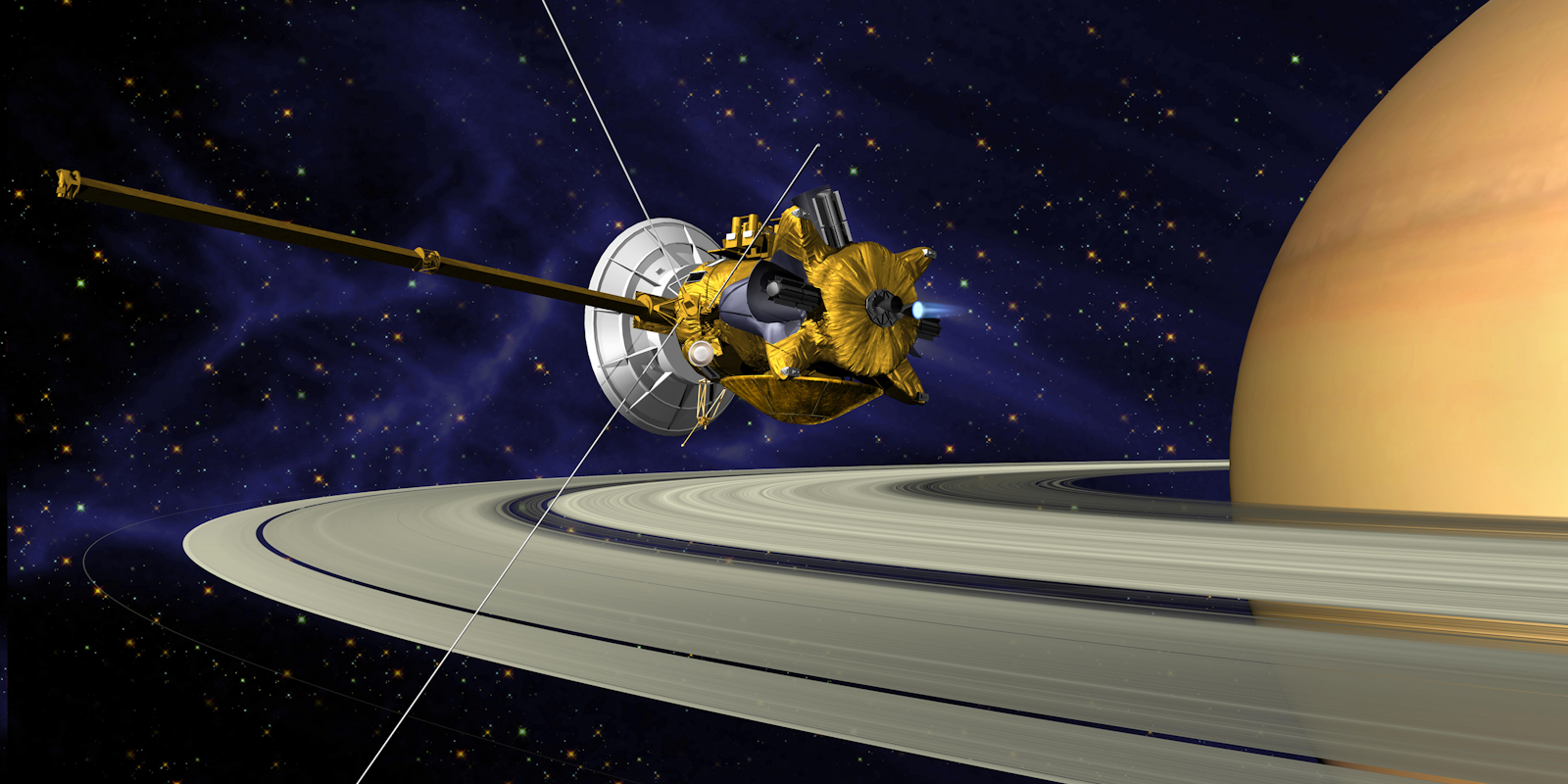NASA‘s Cassini spacecraft ended its 20-year mission on Friday morning, plunging into Saturn’s atmosphere.
Cassini was an orbital probe, launched in 1997 for a seven-year journey to Saturn. Upon arrival in 2004, it spent the next 13 years studying the Saturn system, sending back images of Saturn’s rings and landing an ESA probe on its largest moon, Titan. To give you an idea of how little we knew before this mission, ESA built Cassini’s lander Huygens to act as a boat, in case Titan’s surface was covered in oceans. When it arrived, Huygens landed on a dry surface and Cassini later discovered liquid hydrocarbon lakes on the other side of the moon.
To give you an idea of how little we knew before this mission, ESA built Cassini’s lander Huygens to act as a boat, in case Titan’s surface was covered in oceans. When it arrived, Huygens landed on a dry surface and Cassini later discovered liquid hydrocarbon lakes on the other side of the moon.
On Friday, Sept. 15, Cassini completed its journey by disintegrating in Saturn’s atmosphere. This demise prevented the probe from contaminating any of Saturn’s potentially life-bearing moons. NASA celebrated the mission’s end with an extensive live-blog and video stream, which you can explore on the NASA website.
Tension builds as @CassiniSaturn braces for its #GrandFinale end, concluding a prolific era in space discovery. Info https://t.co/eO3AYq8Kf7 pic.twitter.com/xfEJHTuWvK
— NASA (@NASA) September 14, 2017
The Cassini mission represents more than one generation of work at NASA and ESA, with development beginning in the 1980s. For a long time, it was basically forgotten by the outside world, but in recent years Cassini attracted a new audience through social media.
NASA and ESA both maintain Twitter accounts for space probes like Cassini, blending educational news with lovable updates. Like the Curiosity rover on Mars, it’s easy to view Cassini as a living creature, which is part of why so many people are invested in its “death.”
Cassini the brave; given its last marching orders, there are no more commands to come, no plan for the next sequence. pic.twitter.com/biftjTPJjF
— Bobak Ferdowsi (@tweetsoutloud) September 14, 2017
The meteor formerly known as Cassini now flying over Saturn’s equator through the cloud tops
— Jonathan McDowell (@planet4589) September 15, 2017
In some reference frame, @CassiniSaturn has already vaporized. From our vantage point, it’s signaling.
— Katie Mack (@AstroKatie) September 15, 2017
Cassini is dead. Long live Cassini.
Cassini gave us Saturn, but also gave us Earth — as only deep space could reveal: Small. Frail. Lonely. Steeped in darkness. pic.twitter.com/zjF6jNUFyU
— Neil deGrasse Tyson (@neiltyson) September 14, 2017
NASA lost contact with Cassini in the early hours of Friday morning, but the mission lives on in the data it sent back to Earth. Cassini’s impact will inform future space exploration—and for those of us who aren’t rocket scientists, it gave us an unprecedented look at Saturn and its satellites.


